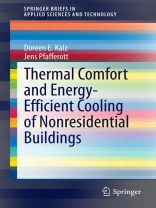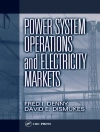This book supports HVAC planners in reducing the cooling energy demand, improving the indoor environment and designing more cost-effective building concepts. High performance buildings have shown that it is possible to go clearly beyond the energy requirements of existing legislation and obtaining good thermal comfort. However, there is still a strong uncertainty in day-to-day practice due to the lack of legislative regulations for mixed-mode buildings which are neither only naturally ventilated nor fully air-conditioned, but use a mix of different low-energy cooling techniques. Based on the findings from monitoring campaigns (long-term measurements in combination with field studies on thermal comfort), simulation studies, and a comprehensive review on existing standards and guidelines, this book acts as a commonly accessible knowledge pool for passive and low-energy cooling techniques.
Daftar Isi
1 HOW TO READ THIS GUIDEBOOK.- 2 IMPACT OF COOLING ON ENERGY USE.- 3 THERMAL INDOOR ENVIRONMENT.- 4 STANDARDS ON THERMAL COMFORT.- 5 USER SATISFACTION WITH THERMAL COMFORT IN OFFICE BUILDINGS.- 6 METHODOLOGY FOR THE EVALUATION OF THERMAL COMFORT IN OFFICE BUILDINGS.- 7 THERMAL‐COMFORT EVALUATION OF OFFICE BUILDINGS IN EUROPE.- 8 APPLICATION OF COOLING CONCEPTS TO EUROPEAN OFFICE BUILDINGS.-
9 THERMAL COMFORT AND ENERGY‐EFFICIENT COOLING.
Tentang Penulis
Dr. Kalz and Dr. Pfafferott have been working in building physics and HVAC concepts for low-energy and net zero energy buildings for many years in industry, at Fraunhofer ISE and at the university level.












